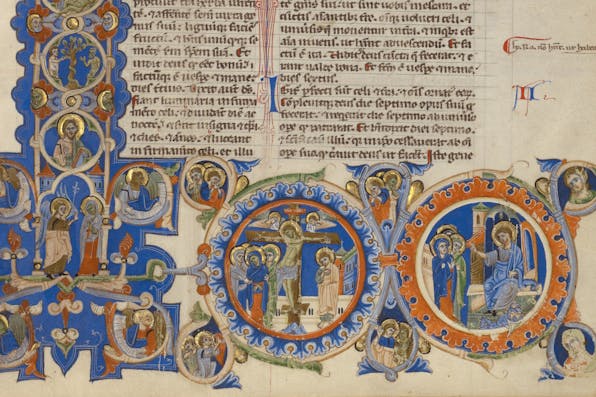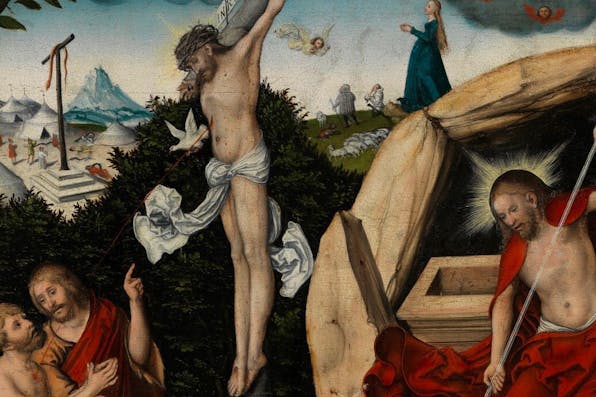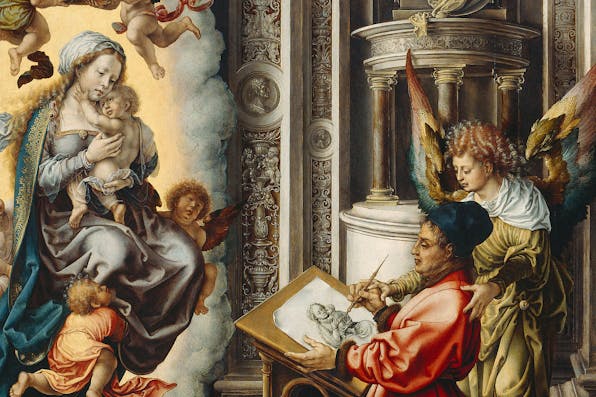
August 28, 2024
The Messages about Jews in Christian Art
And how Jews used art to send messages about themselves.
The letter “I” that begins the Latin translation of the first book of the Hebrew Bible is shaped by an unusual series of illuminations in the 13th-century Abbey Bible from Bologna, Italy. The letter’s vertical body is composed of blue, ochre, and gilt rondelles, illustrating each day of the Creation. But the letter’s elongated base shows another set of events: the life, death, and resurrection of Christ. The message is that those three events form the foundation of the entire Creation, giving meaning to all of earthly history. It becomes impossible to read the text without being made aware of these implications. In this way, the primal origins outlined in the Hebrew book, B’reishit, are transformed and reinterpreted for the Christian reader.
This Bible was on display in 2022 at the Getty Museum’s exhibition, Painted Prophecy: The Hebrew Bible Through Christian Eyes, an exhibition in which many aspects of Jacob Wisse’s discussion of this theme in Mosaic were evident, particularly repeated pictorial attempts to turn the descriptions and narratives of the Hebrew Bible into allegorical anticipations of Christianity. In a Latin version of a 13th-century psalter, for example, an illumination accompanying Psalm 68 shows King David—the presumed author of the psalms—wrestling with a winged demon. Though the text promises that all such enemies would be vanquished by God, here, the implication is that the actual vanquishing will be done by a figure painted above the king—the Son of God, descendant of the House of David. David’s psalms and David’s triumphs prefigure a future salvation. Of course, this repeated approach also lessens the centrality and importance of the Hebrew Bible itself.
This polemical impulse, which Wisse describes in his essay, may be even more potent when it emerges in illuminations instead of free-standing art works, because the modified interpretations are literally embedded in the text. In many Gothic cathedrals, the effect is even more physically potent than that: the building itself becomes a demonstration. In a recent book, Paris and Her Cathedrals, R. Howard Bloch, who teaches French and humanities at Yale, notes that the 12th-century cathedral at Saint-Denis near Paris contains many images from the Hebrew Bible that are meant to serve as an “anagogic” prelude to Christianity.


